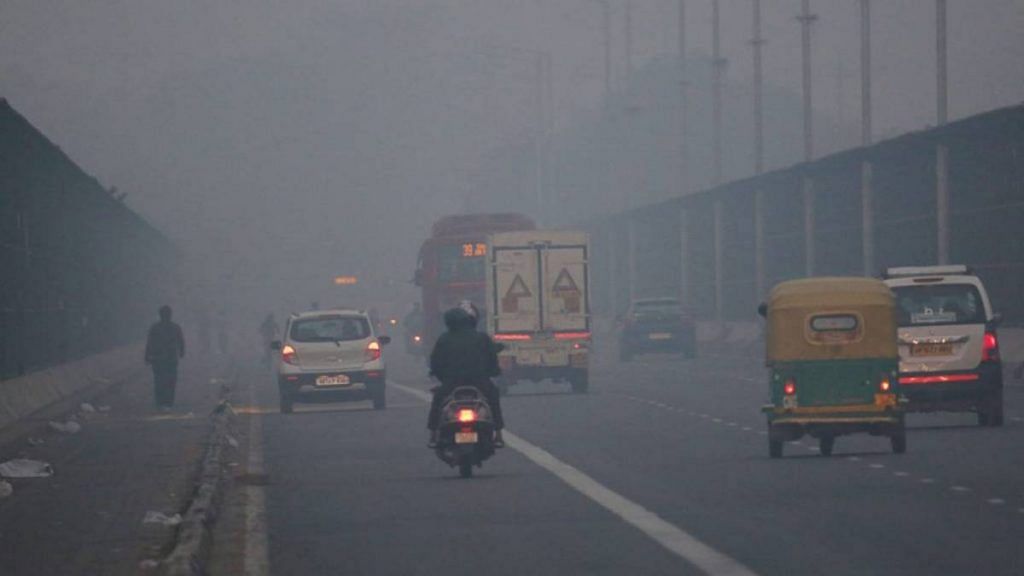New Delhi: The Office of the Principal Scientific Advisor (PSA) to the Government of India, along with a team from the Indian Institute of Technology Delhi (IIT-Delhi) is working with tech startups and industry partners to launch at least 10 science-and tech-driven solutions to fight air pollution in Delhi.
Delhi Research Implementation and Innovation (DRIIV), an initiative of the PSA, is currently conducting a technology pilot called Project SAMEER (Solutions for Air-pollution Mitigation through Engagement, Engineering, and Research) in Delhi NCR from November 2022 to February 2023.
DRIIV aims to bring together local government authorities, IIT-Delhi researchers, tech startups, corporates, NGOs and communities to collectively address the air pollution menace in Delhi-NCR regions in the winter months.
The pilot has a three-pronged approach — awareness and community engagement; science and technology interventions; and industry roundtables and workshops — to implement and scale up anti-pollution interventions that can help clean up the air.
“The Arun Duggal Centre of Excellence for Research in Climate Change and Air Pollution (CERCA) at IIT-Delhi has taken several important actions aimed at raising the visibility of its research work and activities to address the problems of air pollution in the country, including developing Air Quality Management model for the Indo Gangetic plain with World Bank,” Hemant Kaushal, Project Coordinator, CERCA, said in a statement.
“It is imperative for all stakeholders to work collaboratively if we want to tackle environmental issues that face the country. DRIIV brings industry-academia-government bodies together and provides the ideal platform for implementing such impactful projects,” he added.
Also Read: Kejriwal credits Delhi govt for best post-Diwali AQI in 7 yrs, but experts cite multiple factors
Awareness campaigns
As part of the awareness building, doctors and health practitioners have already begun to engage with communities such as farmers, school and college students, residents’ welfare associations (RWAs), and urban slums to create awareness about the adverse health impact of air pollution.
“While we have already begun working on webinars, we are also working with a startup that can create an immersive experience using augmented reality (AR) tools that mimics the effects of pollution,” Amrita Dawn, Head Technology Liaison, DRIIV, told ThePrint.
However, the real challenge is to get science and technology interventions deployed in a sustainable manner on the ground, Dawn said.
Also Read: Municipal corporations should be on the frontlines of India’s air pollution battle
Tech interventions
DRIIV has already identified at least 10 new tech startups that are providing their inventions free of cost for the pilot.
Dawn said that these technology solutions will be deployed at pre-defined hotspots to monitor AQI and reduce pollution.
These include various devices and innovations that can monitor and reduce PM 2.5 and PM 10 levels. These solutions will be deployed in high AQI areas of Delhi and Gurugram as part of project SAMEER to assess their efficacy.
Sagnik Dey, a Professor at the Centre for Atmospheric Sciences at IIT-Delhi, will be assessing the impact of these technology interventions.
“Air pollution is the largest environmental and health concern in India. It is connected with almost all Sustainable Development Goals (SDGs), like economic growth, health burden, cognitive impairment, loss in solar power due to aerosols and climate change,” said Dey in a statement.
Industry roundtables
In 2018, a source apportionment study by Delhi-based The Energy and Resource Institute and Pune-based Automotive Research Association of India had found the average sectoral contributions of PM2.5 and PM10 concentrations in Delhi.
The report found that industrial activities emerged as the greatest contributors to Delhi’s noxious air quality, closely followed by road dust and transportation.
“Many industries, who are now aware of the harm they cause to the environment, are now willing to invest in such solutions,” Dawn said.
Through industry roundtables and workshops, DRIIV hopes to encourage companies to adopt and support technological solutions to environmental problems. Discussions with industries are scheduled to take place later this month.
“While there are some technological solutions already in place, the scale of the problem is such that we need to have multiple interventions,” Dawn said.
Over the past several years, Prof Dey has been putting together a ward-wise data, dating back to 20 years, which builds a detailed picture of the pollution sources in the city. This data will be used to help identify hotspots and decide which technological solutions will be the most effective in a given area.
Most of the technological interventions revolve around air filtration, pollution monitoring and dust suppression. However, the team hopes that the pilot will help attract newer innovations that look at mitigating the pollution at source.
(Edited by Theres Sudeep)
Also Read: India’s fossil fuel imports, bills to double over next two decades, reveals new IEA report
